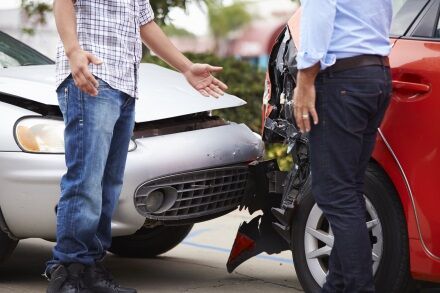Lenders of both mortgages and automobiles will turn to collateral protection insurance if a borrower cannot give documentation that they are insured. This kind of protection is also referred to as lender-placed, creditor-placed, and force-placed insurance, among other names.
A policy of this kind is the type of insurance that a lender will purchase to protect themselves against the possibility of suffering a loss due to the borrower's failure to provide evidence that they have adequate insurance or if the borrower's coverage has lapsed or been terminated. The loan agreement often stipulates that you must maintain a particular automobile insurance coverage. The borrower is legally obligated to pay for any insurance that the lender purchases to safeguard the lender's collateral, even if the lender has the legal right to do so.
The Process of How Collateral Protection Insurance Operates
In most cases, borrowers of automobile loans are required to maintain either collision or comprehensive vehicle insurance coverage, at the very least, until the loan is paid in full. The lender will request evidence of insurance from the borrower, and if the borrower does not provide it, lender will first remind borrower that it is essential to provide such proof of insurance.
After sending such a reminder, the lender can purchase collateral protection insurance for the car if the borrower does not provide sufficient evidence that they have proper insurance. The borrower ultimately bears the expense of this coverage after being passed on to them.
When you get this kind of insurance, you may choose to have the car repaired or replaced up to the amount still owed on the auto loan. However, remember that this coverage is exclusively for the lender's protection and not yours.
Is It Legal To Have Insurance Placed By The Lender?
CFPB permits lenders to impose CPI on borrowers when the borrower cannot produce sufficient documentation that they have insurance. Regarding vehicle insurance, it is essential to remember that the state regulations for the minimal amount of insurance coverage may not be adequate to fulfill the coverage criteria set out by your lender. Some creditors monitor the insurance coverage on the vehicles they have funded to identify whether or not any borrower has allowed policies to expire or have failed to get coverage.

Although your lender does have the legal authority to require you to get collateral protection insurance for your loan, it is not allowed to do so without first providing you with advance notice. To begin, it is quite possible that the lender's authority to impose CPI without appropriate evidence of insurance will be contained in your loan agreement. In addition, the CFPB mandates that lenders provide warning forms to borrowers who do not have insurance, allowing such borrowers to resolve their position before the lender buys a CPI policy.
How Much Does It Cost to Have CPI Coverage?
The fees associated with CPI might differ from lender to lender and state to state. On the other hand, you should anticipate that CPI would be far more costly than the individual vehicle insurance that you buy. This occurs for a few different reasons if you must know.
To begin, there is no time for you to look at many options to pick the one that offers the greatest value. You will get the insurance plan that the lender decides upon. In addition, since insurance companies see borrowers who do not have their coverage as posing a greater risk, the monthly costs for CPI coverage are often higher for these borrowers.
How to Get Out of Compulsory Auto Insurance

Buy your car insurance and add the lender to your policy as the lienholder. You should be able to satisfy the insurance requirements outlined in your loan paperwork. This will prevent you from having insurance on your vehicle against your will. Make sure that you do not have any gaps in your coverage, even if they are just for a short amount of time, since you may be compelled to pay for CPI coverage during period in which you had a gap.
Suppose you believe you should not have been charged for collateral protection insurance. In that case, you should provide your lender with the evidence demonstrating that you have enough insurance in place and request that the lender cancel the CPI coverage acquired on your car. However, even if the lender is at fault, you must ensure that you continue to pay the CPI charges until the error is fixed. Refusing to pay the premiums might result in the repossession of your car.



